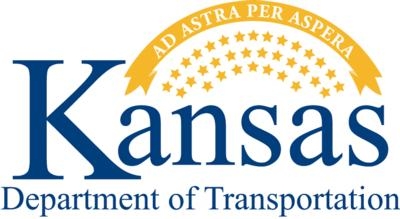Fri, Nov 02, 2018
Will Focus On New Detect And Avoid Capabilities For Drones
The Kansas Department of Transportation is starting the testing phase of the Integration Pilot Program this week. Flights by Iris Automation will focus on enabling new detect and avoid capabilities for drones.

Iris Automation will be testing its collision avoidance technology in the airspace above Gypsum’s farmlands. The technology uses computer vision and artificial intelligence to allow drones to see the world the way a pilot does, enabling beyond visual line of sight flights. Test flights will take place throughout the week, and the technology will be evaluated through controlled drone flights against a manned aircraft.
“The flights we will conduct this week are a crucial part of the overarching strategy to further UAS representation as an important economic contributor for Kansas,” said Bob Brock, KDOT Director of Aviation. “We’re excited to continue our partnership with Iris Automation and our other IPP Team Members as we look forward into the future.”
The Integration Pilot Program was implemented by the Federal Aviation Administration through a Presidential Memorandum. KDOT was selected as one of 10 government organizations to test how drones can fly safely over people, at night and beyond visual line of sight, which will open new uses with industries for drones in the future. These tests are designed to help the FAA develop regulations for these activities.
“At Iris Automation, our cutting-edge technology is unlocking the potential of drones by enabling them to fly beyond visual line of sight,” said Alexander Harmsen, Chief Executive of Iris Automation. “I am delighted to be putting it to the test with Kansas Department of Transportation.”

Iris Automation’s detect and avoid technology has already been tested in thousands of collision scenarios, designed and executed by the company’s flight test team in Nevada. The technology uses a camera, processor and computer vision software to see the airspace around the drone in real-time, enabling collision avoidance. The software classifies and tracks moving objects and identifies their speed and direction in relation to the drone it is attached to. The system acts as a high-level supervisor to the drone’s autopilot, instructing it to execute automated avoidance maneuvers where necessary and informing the remote pilot in command of emergency situations.
(Source: Kansas DOT news release)
More News
He Attempted To Restart The Engine Three Times. On The Third Restart Attempt, He Noticed That Flames Were Coming Out From The Right Wing Near The Fuel Cap Analysis: The pilot repor>[...]
Make Sure You NEVER Miss A New Story From Aero-News Network Do you ever feel like you never see posts from a certain person or page on Facebook or Instagram? Here’s how you c>[...]
From 2009 (YouTube Edition): Leading Air Show Performers Give Their Best Advice for Newcomers On December 6th through December 9th, the Paris Las Vegas Hotel hosted over 1,500 air >[...]
Aero Linx: NASA ASRS ASRS captures confidential reports, analyzes the resulting aviation safety data, and disseminates vital information to the aviation community. The ASRS is an i>[...]
“For our inaugural Pylon Racing Seminar in Roswell, we were thrilled to certify 60 pilots across our six closed-course pylon race classes. Not only did this year’s PRS >[...]
 NTSB Final Report: Rutan Long-EZ
NTSB Final Report: Rutan Long-EZ ANN FAQ: Turn On Post Notifications
ANN FAQ: Turn On Post Notifications Classic Aero-TV: ICAS Perspectives - Advice for New Air Show Performers
Classic Aero-TV: ICAS Perspectives - Advice for New Air Show Performers ANN's Daily Aero-Linx (06.28.25)
ANN's Daily Aero-Linx (06.28.25) Aero-News: Quote of the Day (06.28.25)
Aero-News: Quote of the Day (06.28.25)




